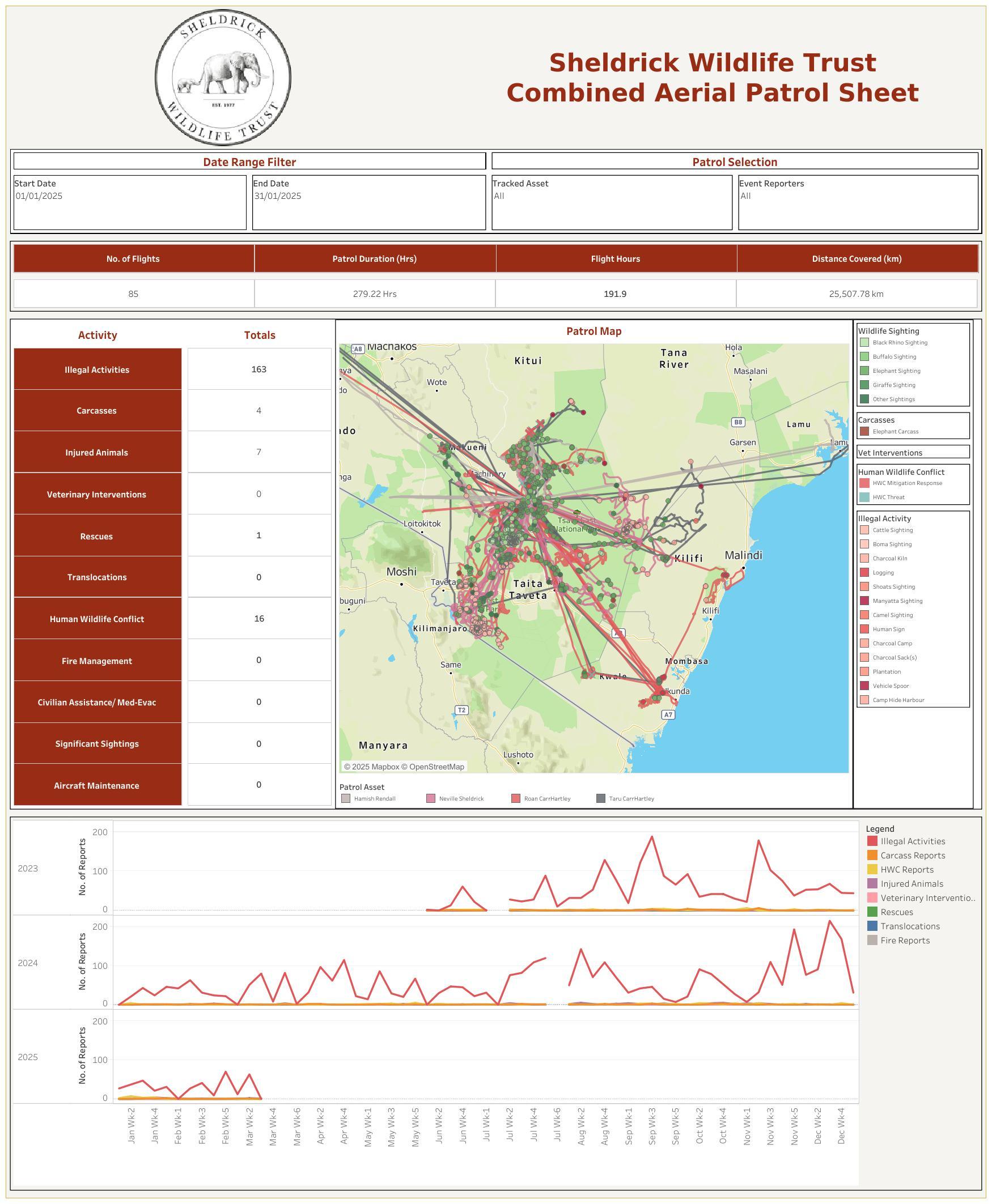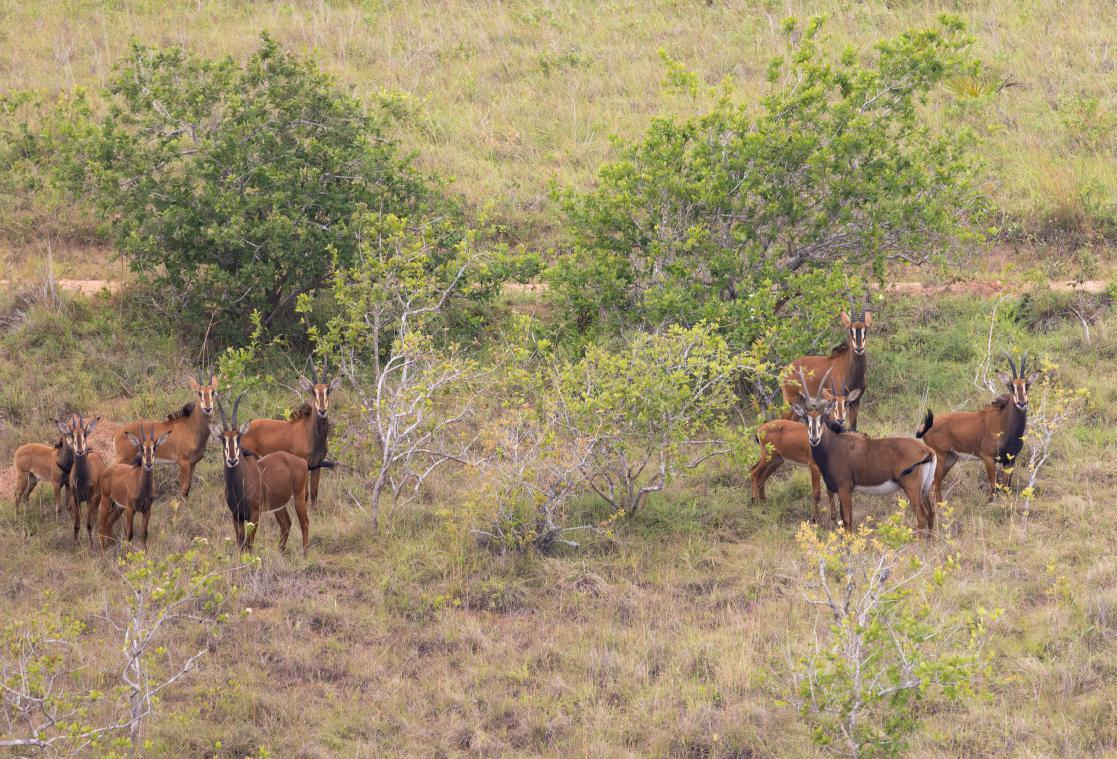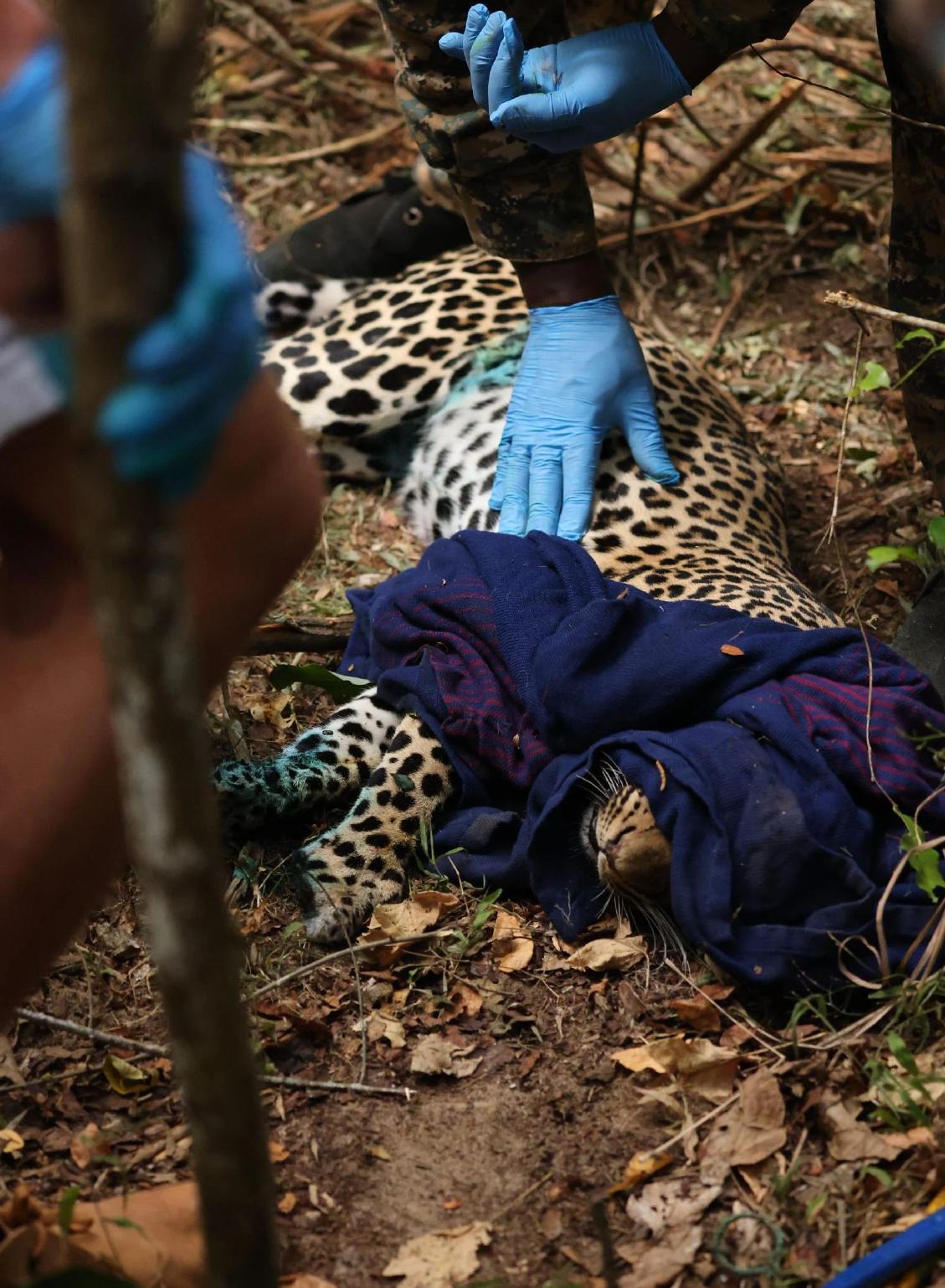

JANUARY 2025 REPORT

JANUARY 2025



JANUARY 2025 REPORT

JANUARY 2025
Operated in support of the Kenya Wildlife Service, Sheldrick Wildlife Trust's Aerial Unit monitors for illegal activity from the skies and offers rapid response assistance in anti-poaching operations, human-wildlife con�ict, veterinary treatments, orphan rescues, and all manner of �eld emergencies.
This report details Aerial Unit activities for January 2025
27,678
Hours �own: Areas patrolled:
192
Kilometres �own:
25,505
Tsavo East, Tsavo West, Chyulu Hills, Shimba Hills NR, Arabuko-Sokoke Forest Reserve, Galana Ranch, Kulalu Ranch, KARI Ranch, Shumbaland Conservancy



Several veterinary cases were attended to in January. These included mostly elephants with suspected arrow or spear wounds, as well as a snared leopard and a lion translocation.
One of the most serious cases attended to was that of a bull elephant seen by community members on the shore of Lake Jipe. Unfortunately, the �rst attempt to treat him was unsuccessful as the elephant retreated into the water where the veterinary team was unable to safely dart him. He then eluded various ground and aerial searches before eventually being sighted from the air by one of our �xed-wing pilots This time, with the help of an SWT helicopter, the bull was safely darted and treated and given a good prognosis.
Another very serious case was that of a second bull elephant seen in Kibwezi Forest with a limp and a terribly swollen leg Following one unsuccessful aerial search, he was spotted from the air the following day and a plan was immediately set into play to remove a vicious snare, which had dug deeply into his �esh. With help from the KWS/SWT Mobile Vet Team and SWT helicopter, the bull was darted and attended to. Fortunately, despite the severity of the infection, he is expected to make a full recovery
Other elephants treated included two bull elephants found on various �xed wing patrols and later treated with helicopter assistance



Elephants were not the only animals attended to. In Lamu County, near Bargoni, a call came in to help a young female leopard that had been caught in a snare. Early in the morning, the following day, the SWT/KWS Amboseli Vet team got a very early start by vehicle and drove to Kaluku, where they were loaded into the SWT Caravan and �own to Mokowe in Lamu They were met by a KWS vehicle and the local Assistant Director before being driven to the site
The leopard was darted and then swiftly treated by Dr. Kariuki, who discovered that the leopard in fact had two snares one cable snare, still attached to a tree, as well as an old rope snare, which had broken off Fortunately, the wound from the cable snare was not severe, and she is expected to make a full recovery. This came as a huge relief to the whole team, who have witnessed many snared leopard cases with a much less happy ending.
In addition to the above successful cases, the Aerial Unit also spent time searching unsuccessfully for three animals including a wounded elephant and giraffe as well as a snared buffalo. As of the time of writing, the elephant was later found and successfully treated, however, the buffalo and giraffe are still at large. Only one elephant carcass was found from the air in January that of a juvenile elephant, cause of death unknown


After a report from a ground team in Shumbaland Conservancy, one of our �xed wing pilots searched for and found an orphaned elephant, which had joined a local herd. Due to the age of the calf, as well as the favorable conditions in the area, it was decided he should remain with the herd Later in the month, an orphaned buffalo calf was, rescued from Lake Jipe, where it had been found wandering along the shore of the lake
In addition to these orphaned animal rescues, an adult elephant was also darted and translocated to Shimba Hills National Reserve after it killed a community member in the north After the report came in, a �xed wing aircraft was �rst sent to �nd the elephant and assess the possibility of a translocation. An SWT/KWS veterinary team then �ew to the site with an SWT helicopter and darted the elephant so that it could be moved by road to Shimba Hills.
Apart from the indirect evidence of poaching in the form of arrowed elephants sighted from the air, the only other signs of poaching that were detected by the Aerial Unit in January were wire snares picked up by a ground team during a routine helicopter patrol. In addition, other illegal activities that were observed included low to moderate illegal livestock incursions, logging for timber, beehive construction, charcoal burning, and marijuana cultivation.


Five human-elephant con�ict cases were responded to by helicopter during the month, with all elephants successfully pushed out of settled areas and back into protected areas.
At the end of the month, a call came in from KWS requesting assistance in capturing and transporting a group of lemurs, which had originated from the island of Mayotte before stowing away on a ship and then later escaping into Mombasa Port when the ship docked. The SWT sent a caravan and a team to assist KWS in catching the lemurs and transporting them to Nairobi where they could be treated and quarantined There are plans to send them back to either Mayotte or Madagascar, where they are indigenous.
One highlight in January was the fairly widespread and out-of-season rainstorms, which extended the green season across much of Tsavo, especially Tsavo West and southern Tsavo East Additionally, one of our pilots was treated to the sighting of a healthy herd of sable antelope with young calves in Shimba Hills National Park. This is the last remaining population of sable in Kenya, which is greatly threatened.



The Aerial Unit, as with all Sheldrick Wildlife Trust's conservation projects, is a donorfunded initiative Thank you to our global supporters, who help us secure Kenya's habitats for the future and make an impact in the �eld, each and every day